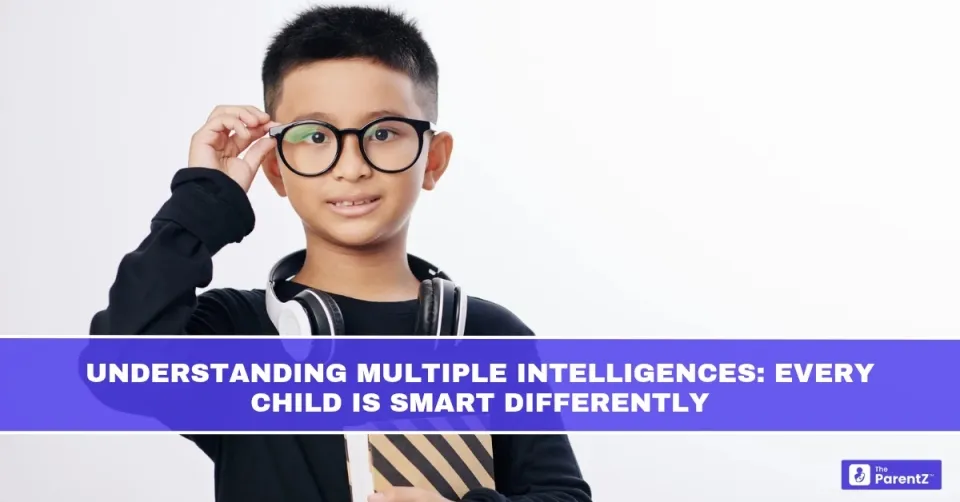When we think of the word "intelligent," many of us picture good report cards, high scores, and children who are quick with numbers or words. For decades, schools and parents alike focused mainly on these “academic smarts”—reading, writing, and math—as the ultimate measure of a child’s intelligence.
But here’s the truth: every child is intelligent, just not always in the same way. Howard Gardner, a developmental psychologist, shared this idea in the 1980s with what’s called the theory of multiple intelligences. Even though scientists still debate and critique it, the concept has helped parents and teachers see children in a broader and more compassionate light. Instead of fitting kids into a single box labeled “smart,” this theory invites us to see that there are many doors to intelligence.
And as parents, this understanding can change how we guide, support, and believe in our children.
The Big Shift: One Size Doesn’t Fit All
Think back to your own school life. Were you praised only when you scored well in exams? Did singing, sports, or drawing feel like “hobbies” instead of something truly valued? Many of us grew up in a system that mainly rewarded linguistic (language) and logical-mathematical (numbers) intelligence.
But Gardner suggested that intelligence isn’t only about words and numbers. He pointed out at least eight kinds of intelligence, each just as meaningful as the traditional ones schools celebrate. That means your child might be building confidence and a bright future through art, music, kindness, body movement, or a love for nature, skills that deserve as much recognition as math problems or essays.
Understanding Multiple Types of Intelligence
Let's explore the eight kinds of intelligence Gardner spoke about.
1. Word Smart (Linguistic Intelligence): These kids love language. They're the ones who started talking early, love stories, and can explain things clearly. They enjoy word games, rhymes, and often become great readers and writers.
2. Number Smart (Logical-Mathematical Intelligence): These children love patterns, logic, and solving problems step by step. They ask "why" and "how" constantly and enjoy puzzles, experiments, and figuring out how things work.
3. Picture Smart (Visual-Spatial Intelligence): These kids think in pictures. They're great with maps, love drawing, notice details others miss, and can visualize things in their minds easily. They often prefer to see information rather than just hear it.
4. Body Smart (Bodily-Kinesthetic Intelligence): These children learn through moving and doing. They're naturally athletic, love hands-on activities, and often fidget when they have to sit still for too long. They remember things better when they can act them out.
5. Music Smart (Musical Intelligence): These kids have a natural sense of rhythm and melody. They might hum constantly, notice when something sounds "off," or easily pick up instruments. They often learn better when information is set to music.
6. People Smart (Interpersonal Intelligence): These children are natural leaders and peacemakers. They understand other people's feelings easily, work well in groups, and often become the friend everyone turns to for advice.
7. Self Smart (Intrapersonal Intelligence): These kids are deep thinkers who understand themselves well. They prefer working alone sometimes, are aware of their own feelings, and like to reflect on their experiences.
8. Nature Smart (Naturalistic Intelligence): These children love the outdoors and notice patterns in nature. They're drawn to animals, plants, and environmental issues. They might collect rocks, know every dog breed, or prefer learning outside.
Some also suggest a ninth, Existential Intelligence, which revolves around deeper questions of life’s meaning. Some children naturally wonder about these bigger questions.
Why This Matters for Your Child's Education
Traditional schools often focus heavily on word-smart and number-smart abilities. While these are important, they're not the only ways your child can learn and succeed. When we understand that intelligence comes in many forms, we can:
- Stop comparing children unfairly: Your child who struggles with reading might be incredibly gifted at understanding people or solving problems with their hands.
- Find better ways to teach: If your child is body smart, they might learn multiplication better by jumping rope while counting than by sitting at a desk with worksheets.
- Build confidence: When children discover their strengths, they feel more capable and motivated to tackle challenging areas.
How to Support Your Child's Unique Intelligence
- Observe Without Judging: Watch how your child naturally approaches problems and what activities they're drawn to. Do they doodle while listening? Do they need to move while thinking? Do they ask lots of questions about how people feel?
- Offer Variety: When helping with homework or explaining something new, try different approaches. If verbal explanations aren't working, try drawing a picture, acting it out, or relating it to music or nature.
- Celebrate All Types of Smart: Make sure your child knows that being good at reading people's emotions is just as valuable as being good at math. When they show strength in any area, acknowledge it genuinely.
- Don't Box Them In: Remember that most children have a mix of intelligences. Your artistic child might also love science, and your athlete might write beautiful stories. People aren't limited to just one type of intelligence.
Practical Tips for Each Intelligence Type
If your child shows strength in:
- Word Smart: Read together daily, encourage storytelling, play word games, and let them explain things to others.
- Number Smart: Incorporate math into cooking, provide logic puzzles, encourage questions about how things work, and explore science together.
- Picture Smart: Use visual aids for learning, encourage drawing and building, provide art supplies, and use maps and diagrams.
- Body Smart: Allow movement breaks, teach through hands-on activities, encourage sports or dance, and let them build or make things.
- Music Smart: Play different types of music, encourage singing, consider music lessons, and use songs to remember information.
- People Smart: Arrange group activities, let them help solve friend conflicts, encourage community service, and discuss different perspectives.
- Self Smart: Provide quiet reflection time, encourage journaling, respect their need for alone time, and ask about their thoughts and feelings.
- Nature Smart: Spend time outdoors, start a garden together, visit museums about nature, and encourage collecting natural objects.
What This Doesn't Mean
It's important to understand that the multiple intelligences theory doesn't mean:
- Your child should only learn through their strongest intelligence.
- They can't improve in areas where they're not naturally strong.
- You should label them as "just" one type of smart.
- They don't need to learn traditional academic skills.
Instead, think of it as having more tools in your parenting toolkit to help your child succeed.
Conclusion
The goal isn't to figure out which intelligence your child has and stick with that forever. Children grow and develop, and their strengths may change over time. The goal is to recognize that intelligence is much broader than we often think and that every child has valuable ways of understanding the world.
When we accept this broader view of intelligence, we help our children see themselves as capable learners who just might need different approaches to reach their potential. We move away from the idea that there's only one way to be smart and instead celebrate the wonderful variety of human intelligence.
Your child is smart, they're just smart in their own unique way. And that's exactly as it should be.
Remember, the most important thing you can do as a parent is to notice, appreciate, and nurture whatever types of intelligence your child displays. When children feel valued for who they naturally are, they're more likely to work hard in areas that don't come as easily to them.









Be the first one to comment on this story.